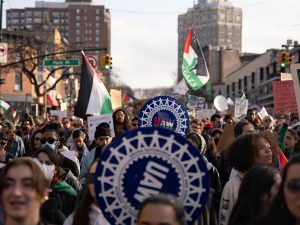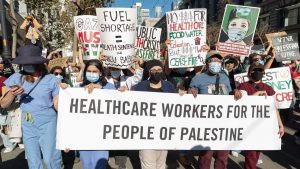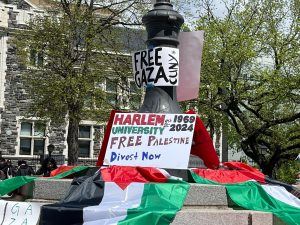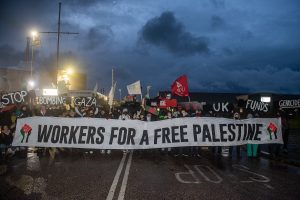Pfizer announced Wednesday that its Covid-19 vaccine was found to be 95 percent effective and had no major side effects. Out of 44,000 participants, 170 participants contracted coronavirus, 162 of whom were in the placebo group and eight in the vaccine group. According to Pfizer’s press release, the vaccine was found to prevent mild and severe forms of Covid-19 and was found to be 94 percent effective in older adults who do not respond as strongly to some vaccine types. Pfizer’s vaccine candidate is well above the 50 percent efficacy threshold set by the FDA for emergency-use authorization, and Pfizer may apply for emergency authorization as soon as next week. According to this timeline, the vaccine could be authorized for certain high-risk populations before the end of the year, but this would require everything running smoothly, which is unlikely. The Trump administration has already ordered 100 million doses of the Pfizer vaccine, worth $1.95 billion, with the option of buying 500 million more.
According to Moderna’s press release, their competing vaccine candidate has demonstrated 94.5 percent efficacy in preventing Covid-19 infections. If the vaccine is approved, Moderna could receive up to $2.45 billion in federal funds toward both further development and future distribution. The Department of Health and Human Services has already granted $955 million to support the clinical development of Moderna’s vaccine candidate: $483 million when Moderna began phase 1 trials in mid-March and $472 million to support phase 3 of the vaccine trial in July. In August, the government agreed to buy and fund the distribution of the initial 100 million doses of the Moderna vaccine contingent on approval, with the option to get more doses.
The goal of President Trump’s “Operation Warp Speed” project is to develop a vaccine as quickly as possible, but this will always be inefficient in the private sector. There are currently 200 different vaccines in production, 53 of which are in human clinical trials, 155 of which are still in development, but none of which are coordinated. While Pfizer and Moderna are the front-runners, any of these other candidates could still rise to the forefront.
Pfizer’s initial press release demonstrated 90 percent effectiveness. Then Moderna’s announcement came out, and Pfizer revised its efficacy to 95 percent. Pharmaceutical companies will continue to one-up each other so that they can be contracted as the first vaccine suppliers. But all the data we currently have are from Pfizer and Moderna’s press releases. There has not yet been an independent peer review on the safety or efficacy of either of these vaccines. Pfizer reported that some participants experienced fever, fatigue, chills, redness, and swelling as side effects. One Moderna vaccine candidate recipient reported a mild fever after taking the first dose, and “full-on Covid-like symptoms” after the second; another participant experienced fatigue after the first dose and a fever after the second. AstraZeneca and Johnson & Johnson, two other companies developing vaccines, both had to pause their phase 3 vaccine clinical trials over side effect concerns. At least two participants in AstraZeneca’s phase 3 trial experienced transverse myelitis, an inflammatory syndrome that affects the spinal cord, and one participant in the Johnson & Johnson trial experienced “unexplained illness” after receiving the shot. The jury is also still out on whether these vaccine candidates will have any long-term side effects.
Production and Distribution Concerns
Even if everything goes smoothly and either of the vaccines is approved for use, how will it be produced and distributed? The federal and state governments will dictate where and how much of the vaccine is shipped. Pfizer’s vaccine will have to be stored at -70 degrees Celsius (-94 degrees Fahrenheit) until shortly before it is injected. By comparison, Moderna’s vaccine can be shipped at a significantly higher temperature, -4 degrees Fahrenheit, so it would not have some of the same distribution challenges as the Pfizer candidate. But distributing it would still require hundreds of refrigerated trucks, and the vaccine can be kept in a standard refrigerator for only up to seven days.
Hospitals and pharmacies will have to figure out how to store vaccines. In the case of the Pfizer vaccine, it could be stored in ultracold freezers (which are pretty uncommon), in conventional freezers for up to five days, or in the cooler for up to 15 days as long as the dry ice is replenished and the cooler isn’t opened more than twice a day. Hospitals and states around the country are trying to buy ultracold freezers to prepare for mass deployment despite the CDC’s instructions to not purchase freezers, because it is developing its own storage solutions for the vaccine rollout. Underfunded, underresourced, and geographically isolated distribution facilities will be unable to distribute large amounts of vaccine. As long as medical companies and large electronics manufacturers exist under capitalism, they will do what is profitable instead of prioritizing public health. As a direct consequence of health care’s commodification, hospitals and states are panic-buying freezers and thereby hoarding them, keeping them out of reach from other states and hospitals.
To administer the vaccine, hospitals, pharmacies, and other distribution sites will need sufficient supplies, PPE, and training. McKesson, a major medical supplier, is the primary candidate to sell syringes, needles, and other supplies to hospitals and distribution sites so that they can administer the vaccine. Hospital workers will have to be trained in administering the vaccine and will also be asked to ensure that people who get the vaccine come back in three weeks to get the second dose.
Then comes one of the most contentious problems: figuring out who gets the vaccine and on what timeline. U.S. officials are claiming that eldercare facilities and health care workers will be first in line. As vaccines become more widely available, Maine and other states are planning to offer the vaccine to additional higher-risk groups, such as people with underlying health conditions, school staff, and people in jails and prisons. While it is critical to ensure that people with the highest exposure and degree of fatality from Covid-19 receive the vaccine first, there are still no plans in place to ensure that the most vulnerable are prioritized. The federal government is responsible only for acquiring the vaccine to give to states, but states must decide how to distribute the vaccine on their own. This results in a patchwork of problems: Washington State’s health department does not have a warehouse that can store the Pfizer vaccine at a cold enough temperature; Arizona is unsure how to distribute the vaccine to rural communities and tribal lands; and North Dakota and Oregon have no clear strategy to take care of migrant workers. More sparsely populated rural areas that lack ultracold storage will likely be some of the last areas to get access. Despite being hurt most by the lack of federal guidance and the prioritization of reopening, groups such as undocumented folks and indigenous people will be deprioritized again.
Effects on the Stock Market
The Dow shot up 4.8 percent in premarket trading after Pfizer announced that its coronavirus vaccine was found to be 90 percent effective in blocking infection on November 9. Pfizer stocks rose 7.7 percent, and its German vaccine partner, BioNTech, rose by 13.9 percent. After Moderna released its vaccine news, Pfizer shares dropped 4 percent, and its German partner BioNTech’s shares fell 12.8 percent. AstraZeneca, which is planning to release interim results on its vaccine in December, saw its shares drop by 0.9 percent.
The vaccine news caused a chain reaction in other areas of the stock market. Since vaccines would require industrial cooling solutions, stocks in freezer and cooling circulator maker Daihan Scientific and deep freezer supplier IlShinbiobase also increased by as much as 30 percent on November 10. European stocks and oil prices are also through the roof. In a client note, Goldman Sachs analysts are projecting that emergency-use authorization (EUA) and distribution of an effective vaccine will, over the next several months, lead to significant upward earnings revisions for virus-exposed firms and help give investors confidence to rotate into those low-valuation stocks, allowing for an improved year-end point target of 3,700 for the S&P 500 and a 16 percent gain in 2021.
The current arrangement places the financial burden of a vaccine’s failure squarely on the backs of the working class, given that taxpayers will shoulder much of the financial risk while corporations stand to generate huge profits should the vaccines succeed. The Biomedical Advanced Research and Development Authority (BARDA) has doled out large sums of money to pharmaceutical companies such as Moderna and Johnson & Johnson. Many of the companies working on the vaccines have secured government contracts, positioning them to be the first distributors with at least a temporary monopoly. As a result, these companies can generate millions and billions of dollars in profit well before the vaccine is ever put into use.
History Repeats Itself
The coronavirus has laid bare the consequences of allowing capitalists to regulate public health. But we’ve all seen the signs before. In 2005, Gilead Sciences notified federal regulators that it was suspending development of a potentially safer, more potent HIV-fighting drug than the one on the market, and it did not restart its FDA application until 2010. A coalition called PrEP4All Collaboration filed a petition on December 4, alleging that Gilead postponed development of the safer drug so it could continue to gain monopoly profits from its older combination HIV drugs, including Viread and Truvada, before those drugs went off patent and faced generic competition. One of the most common forms of pre-exposure prophylaxis (PrEP) to prevent HIV contraction, Truvada, relies on a molecule called tenofovir disoproxil fumarate (TDF). Descovy, Gilead’s safer drug, contains tenofovir alafenamide fumarate (TAF). TAF is more efficiently absorbed by the body than TDF, so it can be dosed at less than one 10th the dose of TDF, while having equivalent anti-HIV efficacy, decreasing the negative side effects on the bones and kidneys. PrEP4All petitioned for the Patent and Trademark Office to reject Gilead’s request for three extra years of patent life on the newer TAF drug so that generic versions of the drug could begin to enter the market. The U.S. Patent and Trademark Office accepted Gilead’s request, allowing Gilead to maintain monopoly pricing on its HIV prevention drugs until 2025.
The CDC sued Gilead Sciences in November 2019 for refusing to obtain a license to use its patented regimens while profiting from research funded by hundreds of millions of taxpayer dollars. Truvada was sold by Gilead beginning in 2004 as an antiretroviral medication to suppress viral load in people living with HIV, while the CDC proved in its government labs in Atlanta that Truvada could be used as a prophylactic to prevent HIV infection in monkeys. The CDC filed patent applications, which resulted in patents being awarded to the government in 2015. Before the government patent approval, however, the FDA approved Truvada as a prevention regimen in 2012, allowing Gilead to make billions of dollars marketing Truvada as PrEP.
In the United States, PrEP costs $20,000 a year for a patient without insurance. In Australia, the cost is $340 a year, so many more of that country’s most at-risk population is taking PrEP. According to ACT UP, the medication costs only $6 a month to manufacture. Reducing Truvada’s U.S. retail price even to Australia’s cost level could decrease HIV transmissions by half each year, demonstrating the impact of capitalist profiteering on human life.
While there are not as many drug-safety concerns about the Moderna and Pfizer vaccines (from the press releases they have provided us, at least, although there are reasons to suspect this data), the parallels with Gilead are stark. Clinical trials were subsidized with public funds while corporations stand to generate monopoly profits on the resulting drugs. The companies would keep the patents on the drugs, and their monopolies are further protected by the absence of data-transparency requirements regarding the sharing of key studies, cell lines, and the know-how to make a product. The vaccine costs $15 per dose to manufacture, and Pfizer would sell it to the government at $39, allowing Pfizer to generate profits of $14 billion worldwide in 2021.
Capitalism has revealed its insufficiency in addressing a public health crisis as large as the pandemic. To ameliorate this crisis, we need a truly socialist economy and social system. Government regulation of vaccines will be insufficient so long as their availability is dictated by corporate interests and individual states’ purchasing power. Nationalizing vaccine production and distribution would increase data transparency, allow vaccines to be produced faster and in larger quantities, and facilitate the coordination of shipping networks and freezer storage, which would allow them to be more quickly transported to the general population. Waiting around for states to figure out how to get the vaccine to certain communities will mean hundreds of thousands more deaths across the country. Putting vaccine production in the hands of workers who prioritize public health would prevent some of the most vulnerable among us, such as undocumented folks and the incarcerated, from being denied or delayed access to a critical resource.











